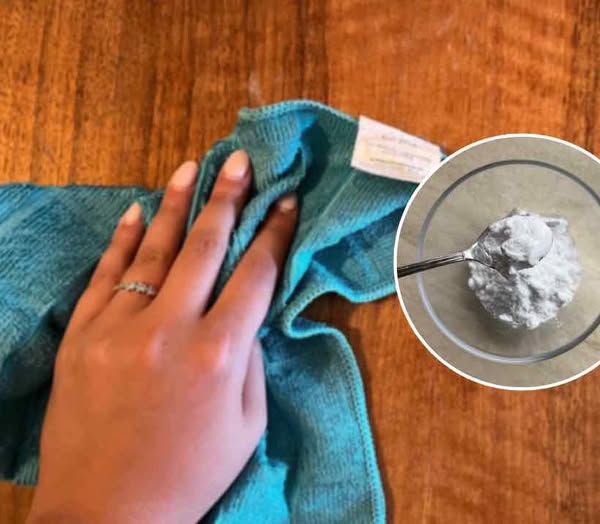ADVERTISEMENT
Step-by-Step Guide to Remove Grease from Kitchen Cabinets
Step 1: Prepare a Cleaning Solution
To start, you’ll want to create a cleaning solution that effectively cuts through the grease without damaging your cabinets. Here are two options you can choose from based on your preference and the level of grease buildup.
Dish Soap and Warm Water Solution
Mix two to three tablespoons of dish soap (preferably a degreasing formula) into one gallon of warm water. This is a gentle solution that can handle light grease buildup without harming your cabinets.
Baking Soda and Vinegar Solution (for heavier grease buildup)
For tougher grease, combine half a cup of baking soda with one cup of white vinegar and add one cup of warm water. The baking soda will act as a gentle abrasive to scrub away grease, while the vinegar’s acidity will cut through oil and grime.
Step 2: Wipe Down Cabinet Surfaces
Before you apply any cleaning solution, use a dry cloth to remove any loose dust and debris from the cabinet surface. This will prevent dirt from being rubbed into the cabinets during cleaning.
Next, dip a soft cloth or sponge into your cleaning solution, wring out any excess liquid, and begin wiping down the cabinets. Start at the top and work your way down to avoid dragging dirt and grease across freshly cleaned areas.
For wooden cabinets, use extra care, as excessive moisture can damage the finish. Wring your cloth so it’s damp but not soaking wet. Painted or laminate cabinets can handle a bit more moisture, so feel free to be a little more generous with your cleaning solution.
Step 3: Scrub Stubborn Grease Spots
If you notice areas with thicker grease buildup, grab a scrub brush or use a soft sponge to gently scrub those areas. Don’t use anything too abrasive, as it could scratch or damage the surface of the cabinets.
For stubborn grease spots, create a paste using baking soda and water. Apply the paste to the affected area, let it sit for about 10-15 minutes, then scrub it away with a cloth or brush. Baking soda works wonders on grease without damaging delicate surfaces.
Step 4: Dry and Polish
After cleaning, it’s important to dry the cabinet surfaces thoroughly with a clean, dry cloth to avoid water spots or streaks. If you have wood cabinets, consider using a little olive oil on a cloth to rub into the wood. This helps nourish the wood, giving it a beautiful shine and restoring its natural luster.
Additional Tips for Deep Cleaning Your Kitchen Cabinets
For Wooden Cabinets
- Use a solution of olive oil and vinegar for cleaning. Mix ¼ cup of olive oil with ¼ cup of vinegar and apply it to the wood to remove grease and give your cabinets a shine. This also helps protect the wood.
- Avoid excess moisture: When cleaning wood, always make sure your cloth or sponge is only damp, not soaking wet. Too much water can warp or damage the wood.
For Painted or Laminate Cabinets
- These types of cabinets are more resistant to moisture, so you can use stronger cleaning solutions. However, avoid abrasive sponges or scrubbers to prevent scratches.
- Use a vinegar-water solution to help disinfect the surfaces while breaking down the grease.
- Wipe down the handles and knobs with a toothbrush dipped in soapy water. This helps remove built-up grease around these often-overlooked areas.
Preventing Grease Build-up in the Future
Cleaning your kitchen cabinets doesn’t have to be a frequent chore if you take a few steps to prevent grease buildup:
- Use a Splatter Guard: When frying or cooking foods that tend to splatter, a splatter guard or lid can help keep your cabinets clean.
- Regular Wiping: Wipe down your cabinets regularly with a damp cloth to remove minor grease and dust before they accumulate.
- Ventilation: Use an exhaust fan or open windows to reduce steam and airborne grease when cooking.
- Cabinet Protectors: Consider placing liners inside your cabinets to catch grease and crumbs.
Conclusion
With these simple steps and natural cleaning solutions, you can easily remove grease from your kitchen cabinets and restore their beauty. Whether you have wood, painted, or laminate cabinets, the methods outlined here will work effectively to clean away years of built-up grime. Regular cleaning and preventative measures will ensure your cabinets remain fresh, shiny, and grease-free, making your kitchen look spotless and inviting. Happy cleaning!
ADVERTISEMENT
